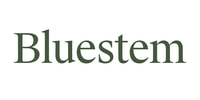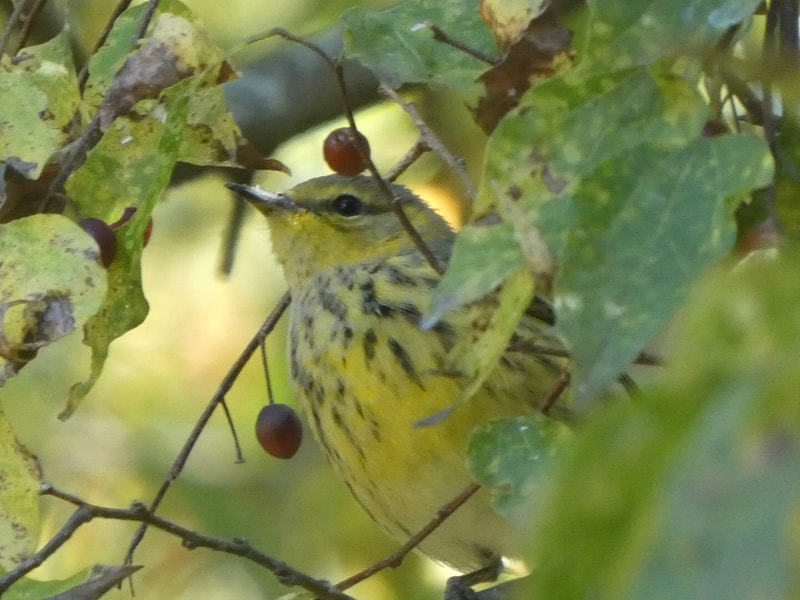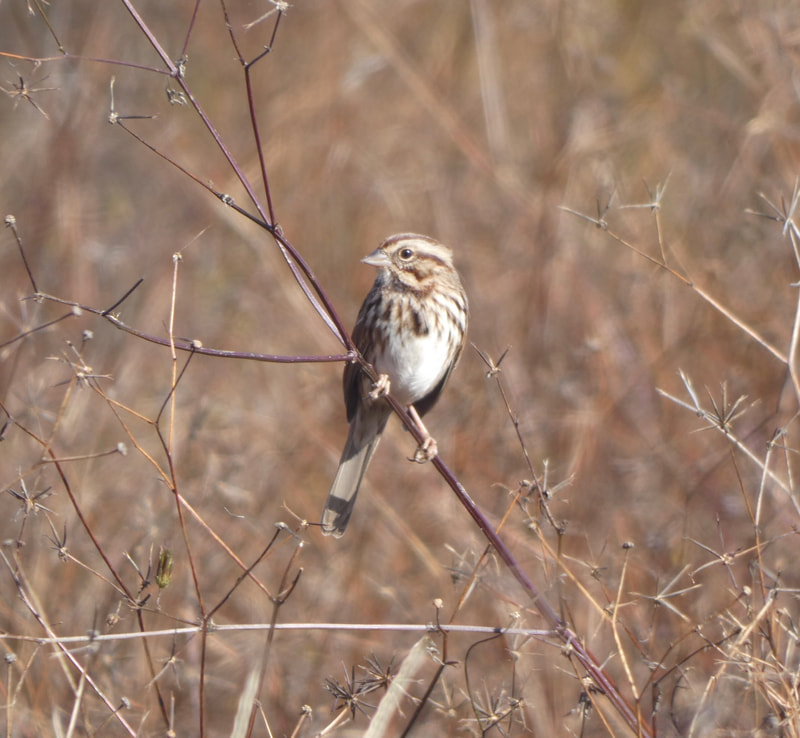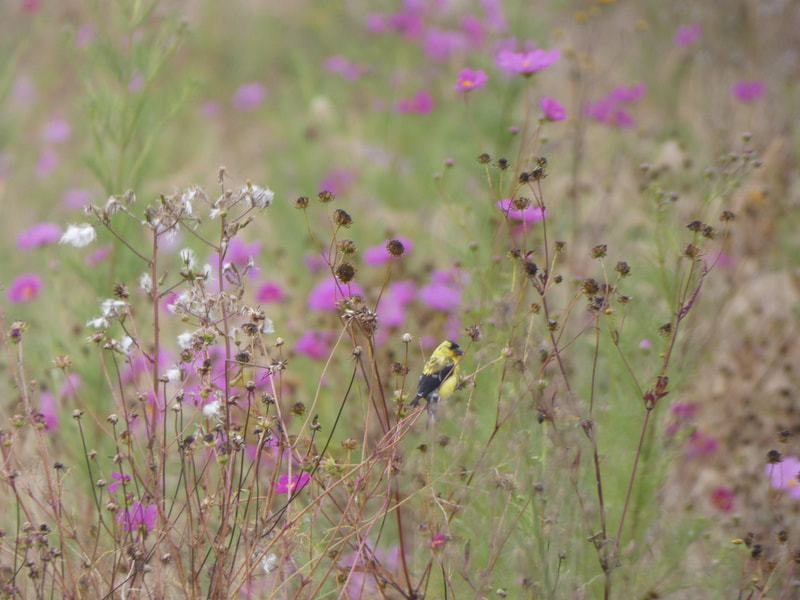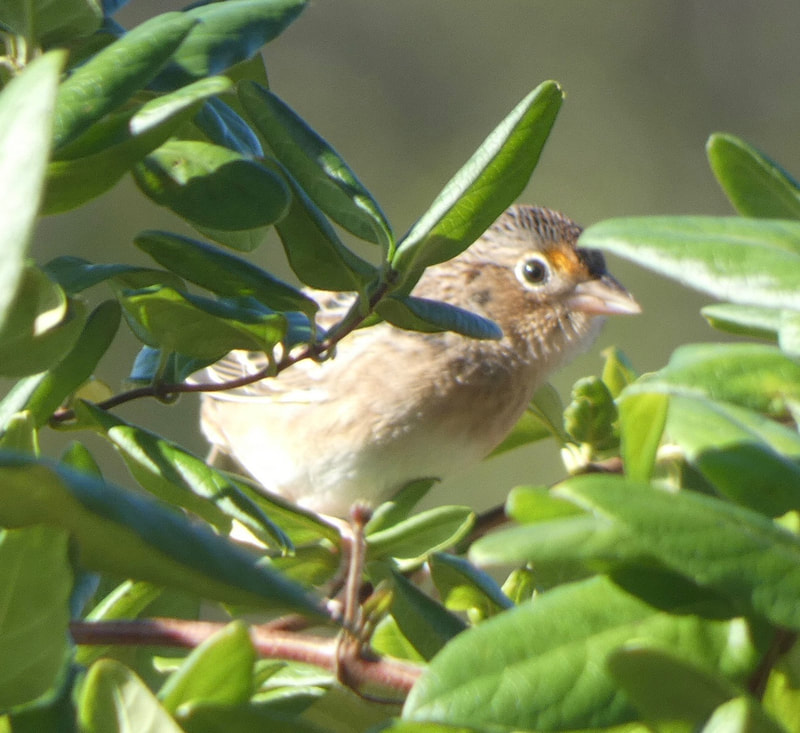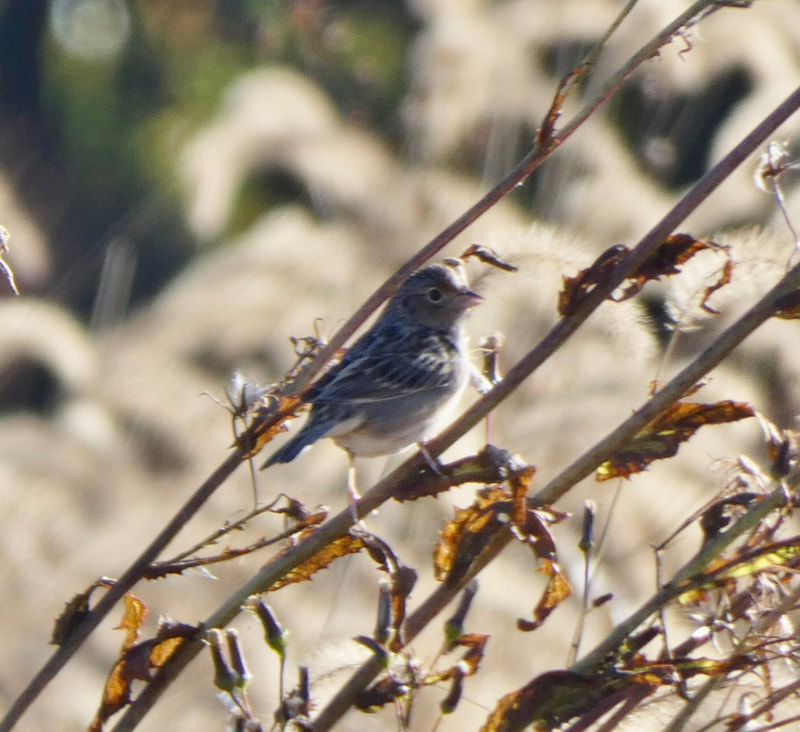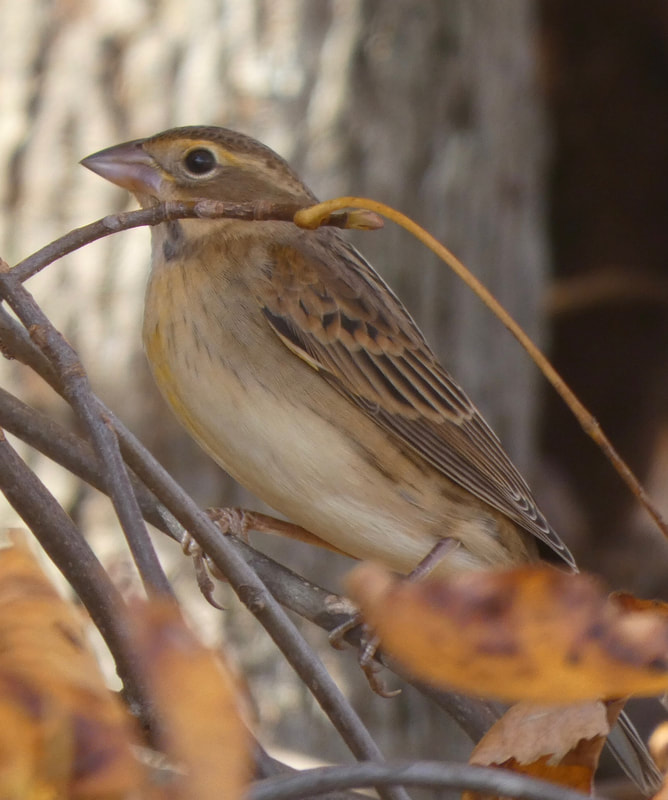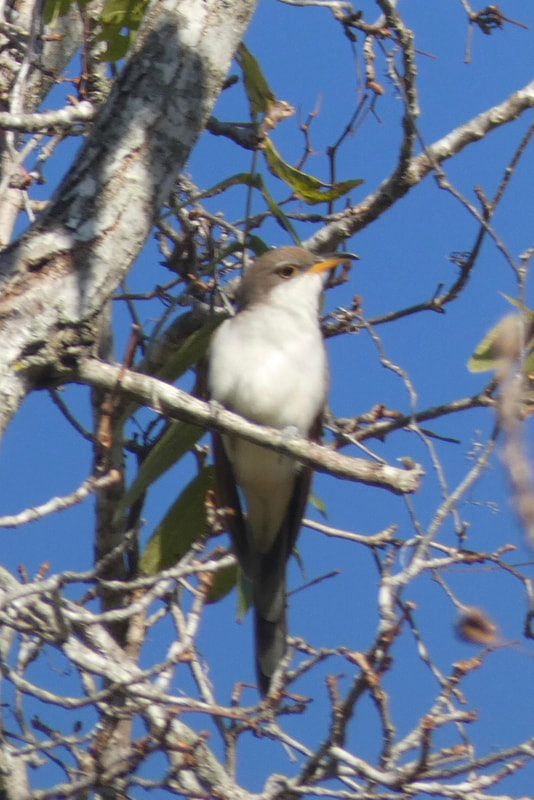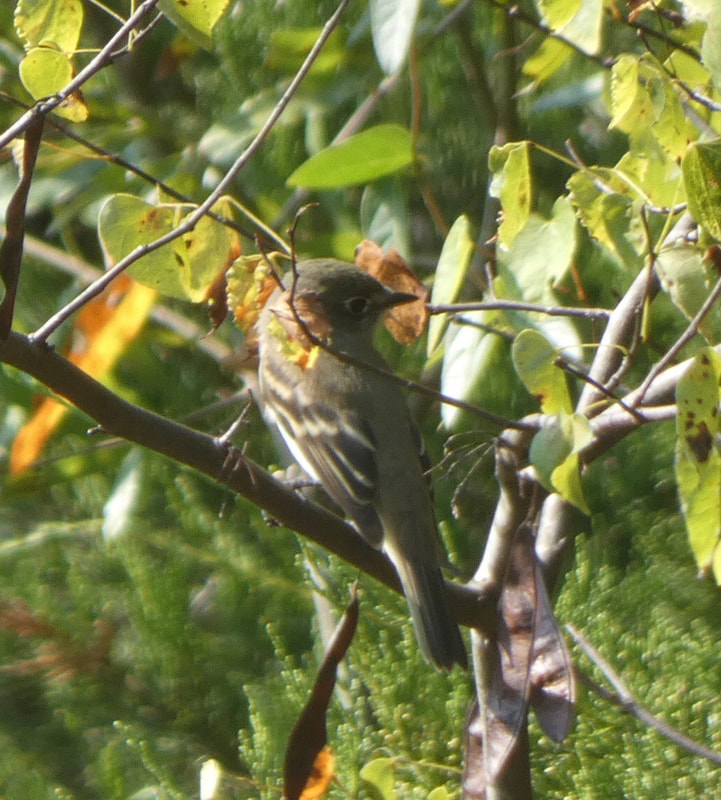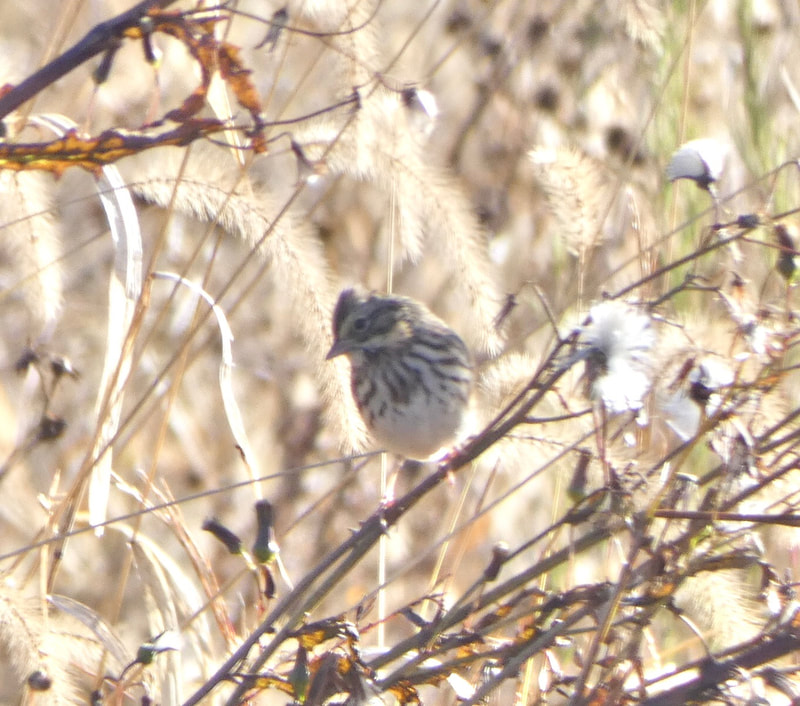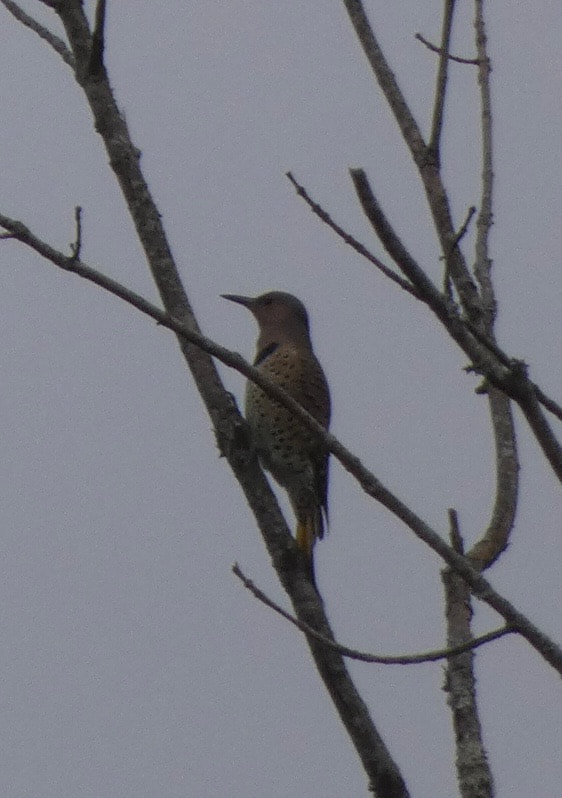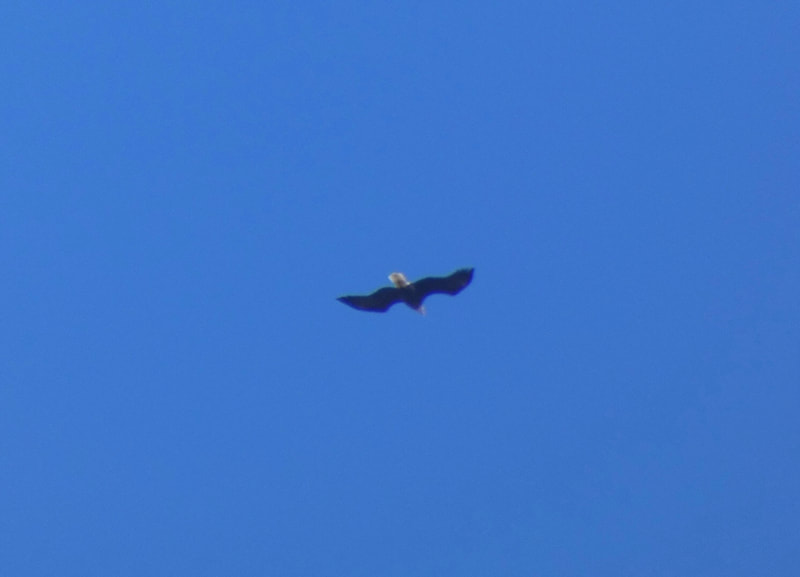Birds at Bluestem
A Community Collaboration
A Community Collaboration
|
Friends and Bluestem Birders have already accounted for more than 130 bird species visiting and caring for Bluestem. We find them circling the skies, dive bombing for seeds, perched on flowers, and late in the afternoons, performing bird ballet above the native grasslands. We are delighted by their stewardship and protection of this special place.
For more information bird sightings at Bluestem, click here. Bird identification from left to right. Descriptions courtesy of Noah Rokoske.
Cape May Warbler An uncommon migrant found in deciduous hardwoods in spring and fall in the NC Piedmont. It is more common in the fall than spring; however they can pass through in very late April and early May. In the fall, they fly through in mid-September through late October. The males are overall golden with a brownish back, striping on their belly and flanks, and a red face-patch. The females are more subdued without red on their face. Juveniles in the fall are generally taupe-colored with darker striping underneath.
Song Sparrow Commonly found in the region. While technically year-round, this species is primarily migratory in the NC Piedmont with the majority of birds leaving by May and returning in October. It is a quintessential sparrow inhabiting a variety of places, including marshes, thickets, fields, wasteland, forest edges, and suburbia. It sings persistently throughout the year, in highly variable 3 parts: whistle, trill, buzz. American Goldfinch Common year-round, the males are a sunny yellow with black cap and wings, the females duller olive-and- yellow with black cap and wings. The males molt in September to look like females, then back to yellow in March. Frequently found in gardens, fields, and forests in the summer eating seeds from flowers and forbs. They enjoy picking seeds from gum-balls in winter and will appear at feeders, especially those stocked with thistle seed. Their call happens in flight and can sound like the mnemonic “Po-ta-to-chip”. Waiting to be identified! Grasshopper Sparrow Local, uncommon breeder with limited habitat in the NC Piedmont, as the native prairie has been replaced by forest and human development. Arrives in late April and leaves by November. This reclusive, soft-spoken bird can be found in overgrown pastures and meadows where it eats (you guessed it) grasshoppers, and other insects. It sings at dusk on warm summer evenings a high-pitched, insect-like “pit-tit-tick pzzzzzzzz”. Eastern Flycatcher Bird identification from left to right
Dickcissel Is in the cardinal family and rare in this region. Typically a western bird making its home in the plains region of the country, it can be found in small numbers east of the Appalachians as well. There is much debate about the species’s range. In Orange County there are several records of breeding Dickcissels, including one just down the way off Hurdle Mills Road. Males are characterized by yellow on face and chest with a big black bib and red shoulders. The females lack the black throat-patch and juveniles look more like sparrows with streaky, brown backs. Dickcissels have a tendency towards meadows and thickets.
Waiting to be identified! Waiting to be identified! Eastern Phoebe Gets its name from its song: a scratchy, buzzy “FEE-bee, FEE-brr”. Is common year-round and the region's only year-round flycatcher. Typically prefers open habitat but can also be found near bodies of water. It sallies from low perches on field edges to open woodland to water. Builds nests under eaves on buildings and bridge overhangs. Northern Flicker Locally very common, and technically year-round but can also be migratory. The population increases in September and decreases in April. Prefers dead trees in wet areas and also possesses the unusual habit of foraging on the ground like a dove. Its call is a triumphant “keyAH!” and it also makes a low-pitched chanting sound. Bald Eagle Uncommon year-round. It can be seen around bodies of water. Catches fish (or steals from Ospreys) and scavenges like vultures. It is the only eagle in the NC Piedmont, other than the occasional vagrant Golden Eagle. Critically endangered in the 1980s because of lead poisoning from toxic bullets. Its call is a series of squeaky “keel keel keel". Thank you to Bluestem Birders!
Noah Rokoske
Angie Holt Dorothy Gerard Mel Green Photo by Noah Rokoske, Bluestem Birder and Volunteer
Bluestem. Where nature is enough. |
